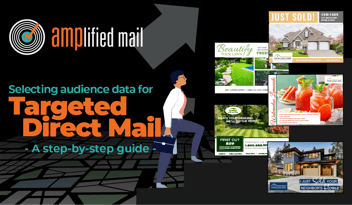5 Tips on Sending Direct Mail

The most important thing is to have a clean and up-to-date database, without that you have no way of sending your recipients offers and content they will find relevant. Next, you need to have a solid campaign management solution that helps you define your journeys, your audiences, and execute very personalized direct mailings.
1: Just as in Digital, Targeting and Personalization Are Crucial
If you define narrower segments and send each one a personalized offer, your content is more likely to resonate and generate sales. Track response rates and use them to refine your list and keep it up to date. Where possible, use face-to-face and digital interactions to verify and update contact information. As for personalization, it should be more than using the recipient’s name. Personalization should be about connecting with the recipient so he or she sees you and your team as people and ideally assimilate your content as a service. This could simply be adding the address and opening hours of the closest or most frequently used store (based on geo-location and shopping habits) or pointing out the sections of a catalogue where relevant items might be found (based on displayed behavior or declared interest).
2: Make DM Part of Your Overall Marketing Campaign
As with digital marketing, a single mailing does not make a campaign. Be prepared to send multiple waves and do A/B testing in order to get the full benefit of your mailing database. Also, integrating DM into your overall marketing efforts builds synergy. Capture email addresses to supplement DM communications with emailed offers, provide coupon codes redeemable online, and use images related or identical to what’s on your website and social media ads to quickly signal to the visitor that they’ve arrived on the right page.
3: The Best Calls-to-Action Are Clear, Compelling, Varied, and Repeated
Your DM must include effective calls-to-action (CTAs). These have to be compelling to the recipient (see Best Practice #1 above). Your CTA must clearly tell the recipient what you want him or her to do. Repeat the CTA several times in a visually obvious way, since recipients often skim and may miss this critical element. Using a “P.S.” section and sidebars to briefly reiterate your offer and CTA in brief has a proven track record of improving response rates, as do the old standbys of scarcity and urgency.
4: Provide Multiple Ways to Respond
To minimize friction, and accommodate varied preferences, include as many ways as possible for recipients to respond. This means postage-paid postcards, order-form inserts, coupons that can be used in-person and online, phone numbers for placing orders, and as many ways as possible to respond using a mobile phone—QR codes, unique coupon code or URLs that guide recipients to an offer landing page.
5: More Information Is Better
Recipients spend more time with physical mail than with digital messages and look at a piece of paper very differently from a screen, so you can provide more information. This is especially important since you’re most likely trying to close a sale rather than just capture contact information. Thus, include all the information needed for the recipient to make the decision you want. Including clear and attractive images is very helpful in supporting that. Remember that your message has to be customer-centric, concentrating on the benefits the recipient will find valuable, such as value, convenience, peace of mind, quality, etc., rather than on your offering’s features. Authentic testimonials are very effective social proofs, especially if accompanied by pictures of the people offering them.



